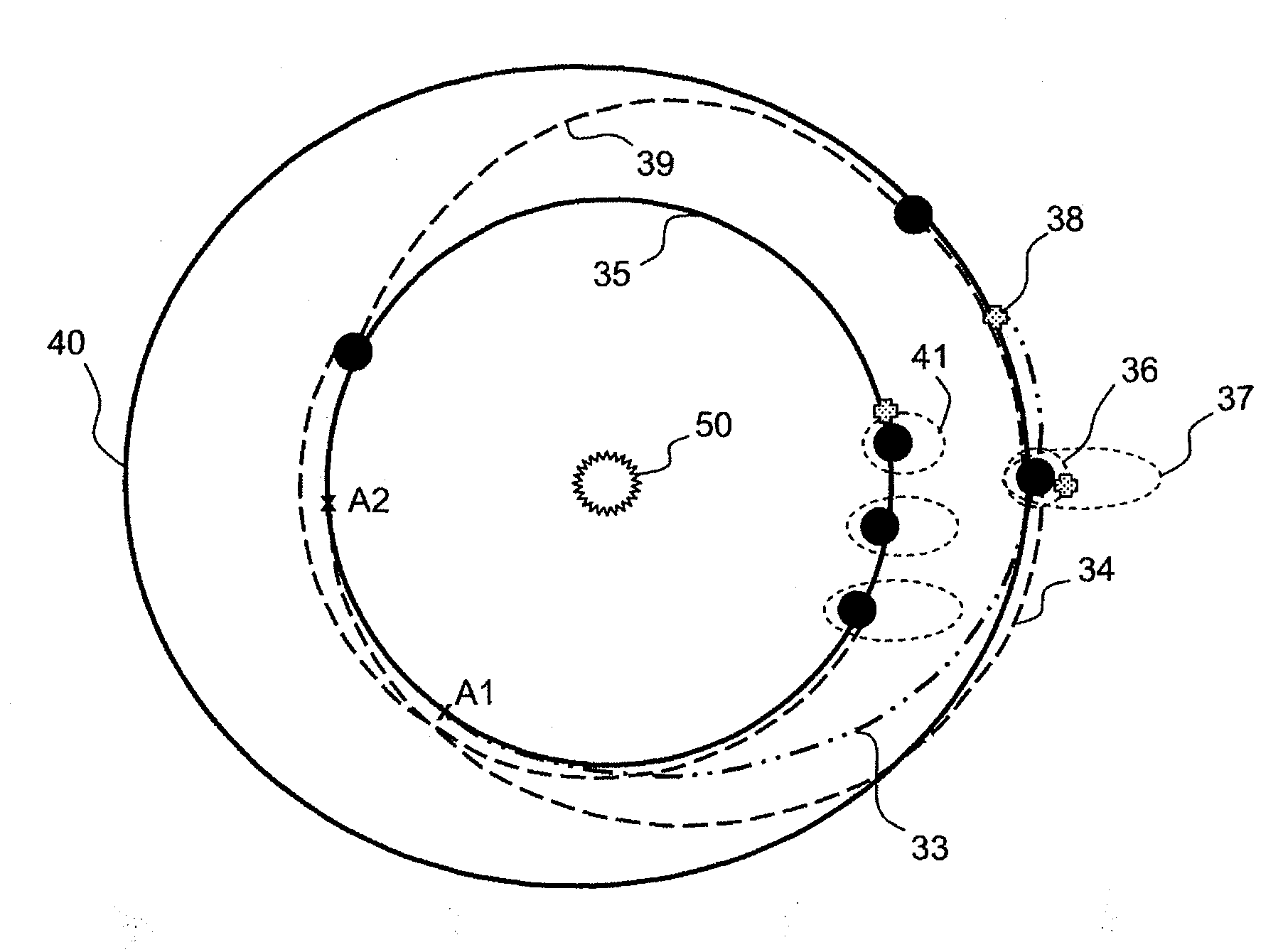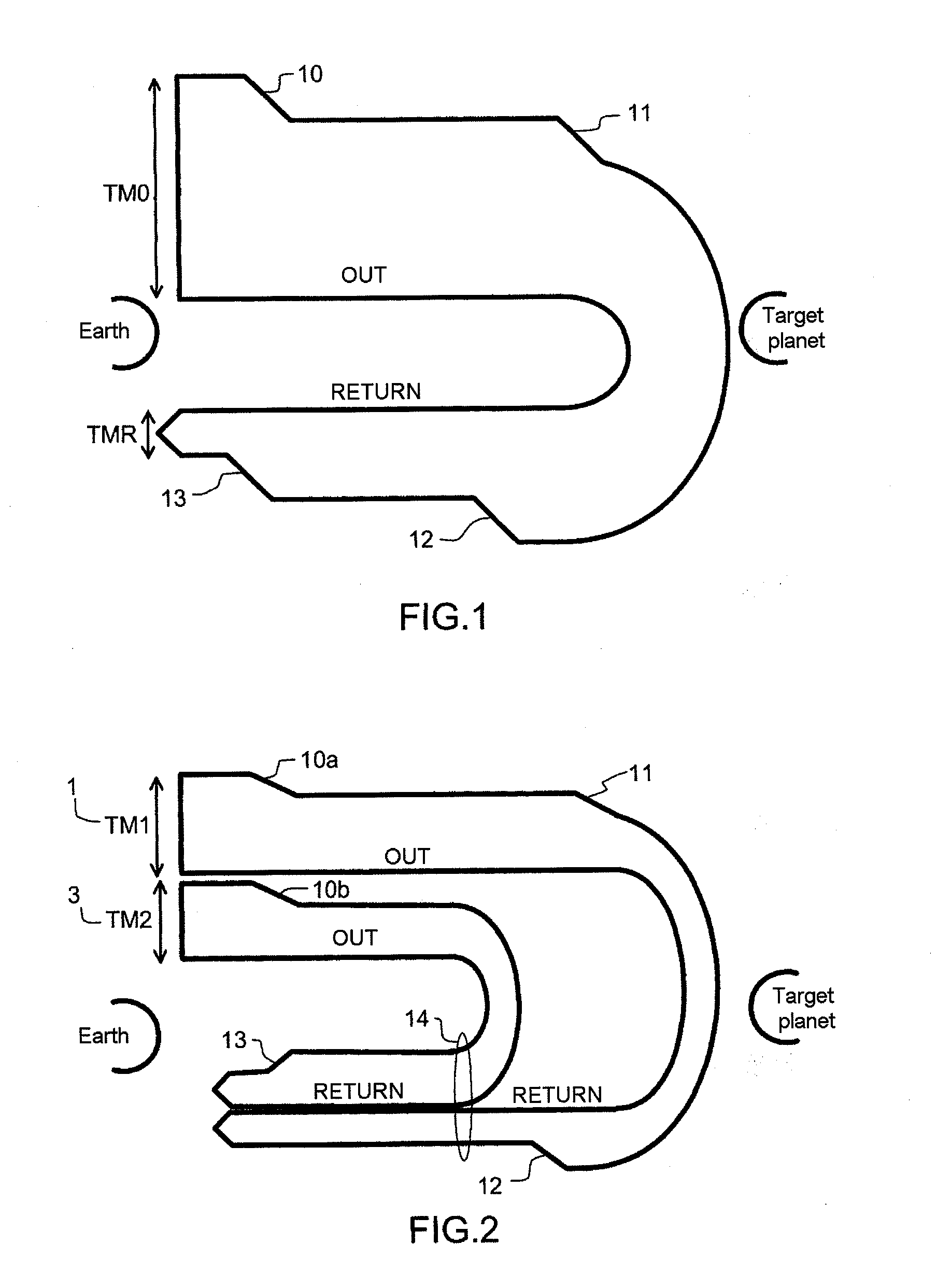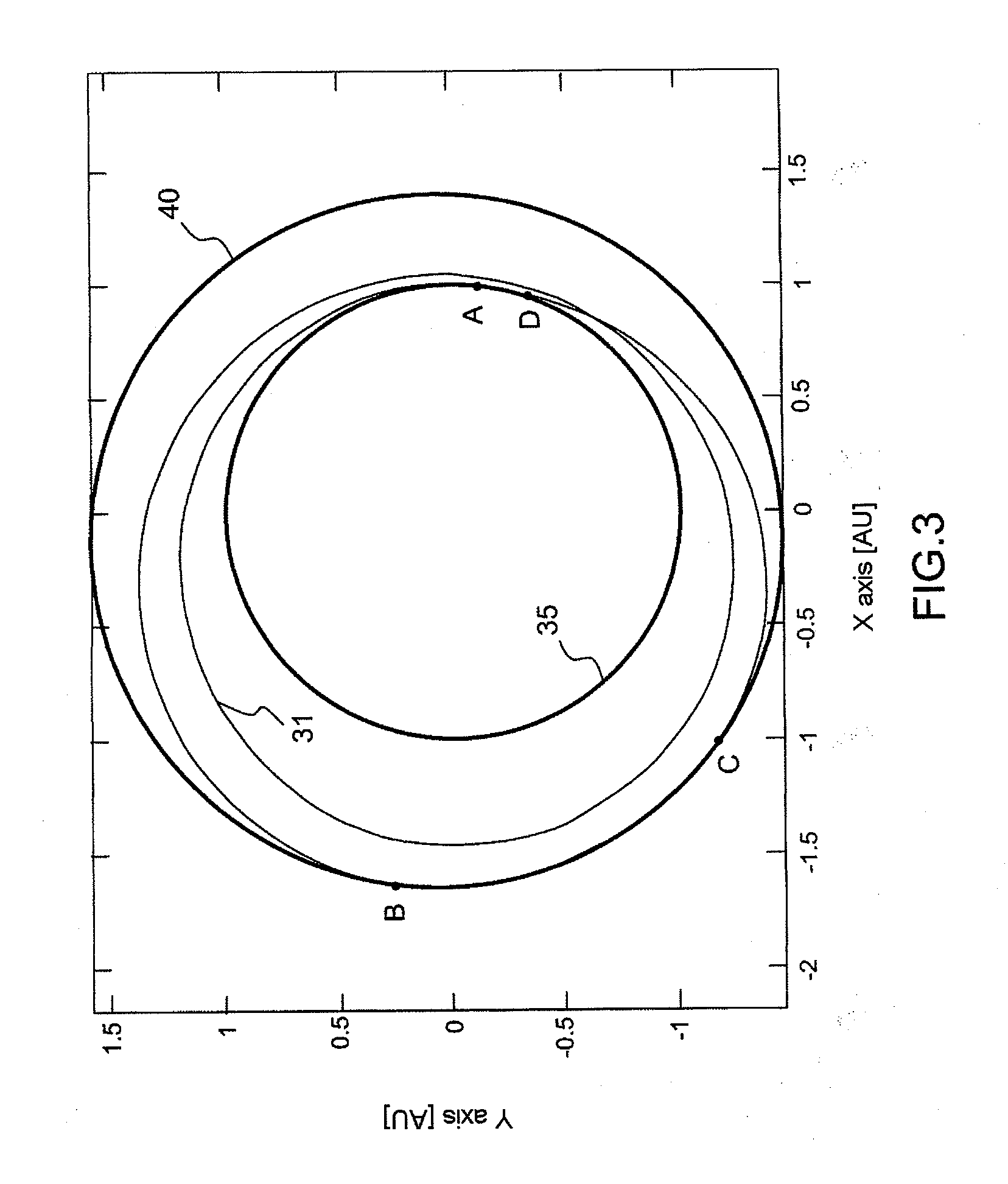Method for Lightening the Weight of Fuel Stowed Onboard During an Interplanetary Mission
a technology for interplanetary missions and fuel stowing, which is applied in the direction of rocket engine plants, cosmonautic vehicles, machines/engines, etc., can solve the problems of affecting the cost of the interplanetary mission, the weight of the fuel to be carried being very significant, and the associated consumption of weigh
- Summary
- Abstract
- Description
- Claims
- Application Information
AI Technical Summary
Benefits of technology
Problems solved by technology
Method used
Image
Examples
Embodiment Construction
[0031]Referring to FIG. 1, the total weight TM0 of fuel onboard an orbiter spacecraft at launch decreases fiercely firstly during the phase of freeing of the craft with respect to the Earth and of its orientation 10 corresponding to a first speed variation equal to Delta V1 and secondly during the phase of braking 11 on the approach to the target planet and of landing on the latter corresponding to a second speed variation equal to Delta V2. During the spacecraft's return trip to Earth, the total weight of fuel decreases greatly a third time during the phase of departure 12 from the target planet corresponding to a third speed variation equal to Delta V3, then a fourth time during a phase of braking and landing 13 on Earth corresponding to a fourth speed variation equal to Delta V4.
[0032]Upon arrival on Earth, the remaining weight TMR aboard the spacecraft corresponds to the intrinsic weight of the spacecraft to which is added the weight of any passengers and / or of samples of matter...
PUM
 Login to View More
Login to View More Abstract
Description
Claims
Application Information
 Login to View More
Login to View More - R&D
- Intellectual Property
- Life Sciences
- Materials
- Tech Scout
- Unparalleled Data Quality
- Higher Quality Content
- 60% Fewer Hallucinations
Browse by: Latest US Patents, China's latest patents, Technical Efficacy Thesaurus, Application Domain, Technology Topic, Popular Technical Reports.
© 2025 PatSnap. All rights reserved.Legal|Privacy policy|Modern Slavery Act Transparency Statement|Sitemap|About US| Contact US: help@patsnap.com



